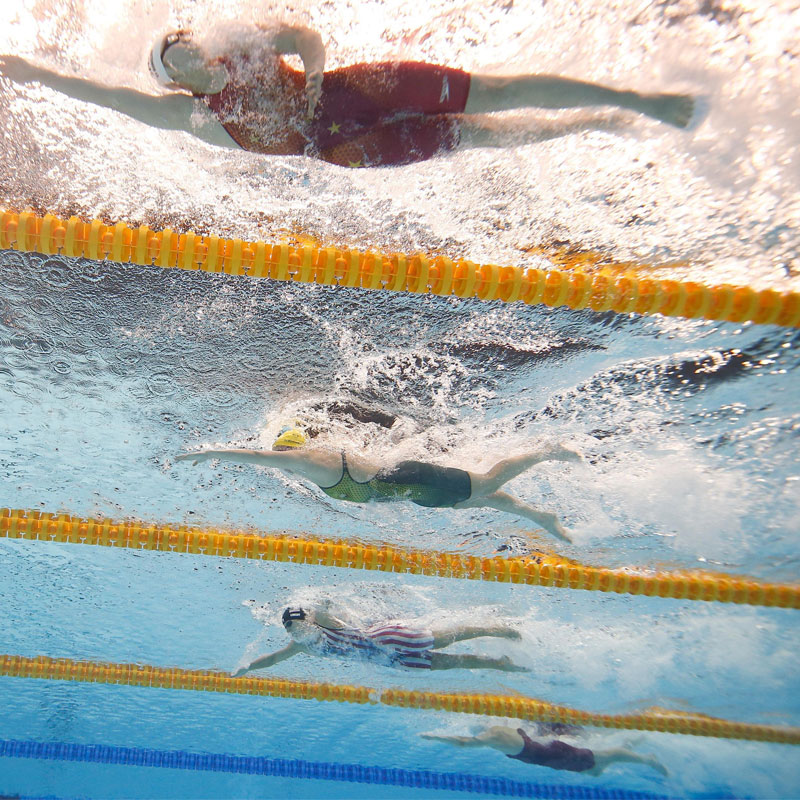Holding one’s breath underwater is a fundamental skill in swimming, which is related to safety and performance. By following the correct methods, one can significantly increase the duration and comfort of breath-holding. Here are the systematic training steps:

EU. Safety First: Core Principle
1. Never practice alone: Always have a lifeguard or a companion supervise you.
2. Progress gradually: Start on land, then move to shallow water and deep water step by step.
3. Listen to your body: Stop immediately and come out of the water to breathe if you experience severe discomfort (such as dizziness, tingling, or chest pain).
4. Avoid forcing yourself to the limit: Gradually increase the time you hold your breath based on comfort.
5. Exit the water skillfully: After your head leaves the water, exhale first and then inhale to prevent choking.
II. Land Preparation: Laying a Solid Foundation
Abdominal breathing exercise (essencial):
Sit or lie down, place one hand on your chest and the other on your abdomen.
Inhale slowly and deeply through your nose, feeling your abdomen rise (while your chest remains relatively still).
Exhale slowly, evenly and completely through your mouth, feeling your abdomen draw in. Practice for 5 to 10 minutes, focusing on the depth and rhythm of your breathing.
2. Static Breath-Holding Exercise:
Take several deep abdominal breaths and hold your breath after the last deep inhalation.
Relax your entire body (especially your shoulders, neck, e cara) and avoid tension.
Record the comfortable breath-holding time (such as 30 seconds) and do not force it.
Key point: Swallowing saliva or slightly contracting your throat during breath-holding can temporarily suppress the urge to breathe, but you should remain naturally relaxed.
III. Shallow Water Adaptation: Overcoming Fear
1. Standing breath-holding (face submerged)
Stand firmly in water up to your waist or chest, and hold onto the pool edge. Take a few deep abdominal breaths. Take a deep breath, slowly lower your head and submerge your face completely in the water. Stay relaxed and enjoy the tranquility in the water. Hold your breath for as long as you are comfortable, then raise your head and breathe out first, then in.
2. Overcoming the head-lifting inhalation reflex:
When you raise your head, be sure to exhale first (make a “puff” sound), blow the water away from your mouth and nose, and then inhale. Practice this action deliberately to form a conditioned reflex.
IV. Advanced Skills in Water: Dynamics and Duration
Underwater Exhaling Practice:
After submerging your face in water, slowly and continuously exhale bubbles through your nose or mouth. Feel the release of carbon dioxide and reduce the urge to breathe. When you have exhaled completely, come up for air.
2. Wall kick float breath hold:
Lean against the pool wall, take a deep breath, lower your head and tuck in your chin, then lean forward to float.
Maintain a streamlined position (with arms stretched out and close to your ears), relax your whole body and hold your breath. Feel the buoyancy of the water.
3. Combining simple actions:
When floating and holding your breath, try to move your legs slowly (freestyle kick) or your arms (breaststroke pull). Keep your movements relaxed and slow to reduce oxygen consumption.
V. Key Techniques for Improving Breath-Holding Time
Enhance tolerance to carbon dioxide:
When holding your breath on land or in water, when the first urge to breathe (a slight twitch of the diaphragm) occurs, try to stay relaxed and hold on for another 5 to 10 seconds (safely). This is the key window for improvement.
2. Ultimate Relaxation:
When holding your breath, imagine your body as light as a feather. Relax the muscles in your face, jaw, ombros, arms and legs. Tension will accelerate oxygen consumption.
You can try underwater meditation, focusing on your heartbeat or the sound of water flow.
3. Regular Training:
Conduct targeted practice 2 to 3 times a week. Each session of land and water practice should last about 15 to 20 minutes in total. Record the comfortable breath-holding time for each session, with the goal of achieving a small and gradual increase (such as 5 to 10 seconds per week).
4. Good physical condition: Avoid practicing when overly full or hungry. Get sufficient sleep.
VI. Important Tips
Individual differences: Breath-holding ability is influenced by factors such as lung capacity, psychology, and training. Do not compare with others.
Non-professional goals: This guide aims to enhance swimming comfort and safety. Professional free diving or scuba diving requires systematic training and supervision.
Children’s practice: It should be carried out under the close supervision of an adult, in shallow water areas, and with emphasis on safety rules.
Summary: Holding one’s breath underwater is a combination of breath control, body relaxation, and mental harmony. Start with basic breathing exercises on land, follow safety principles, and gradually adapt to and extend the time of breath-holding in water step by step. Focus on relaxation and exhalation techniques, and with regular practice, you will feel more at ease and confident in the water. Each smooth alternation of breathing is a testament to your harmonious coexistence with water.
Capas de natação personalizadas sem pedido mínimo,if you are interested, Entre em contato conosco.